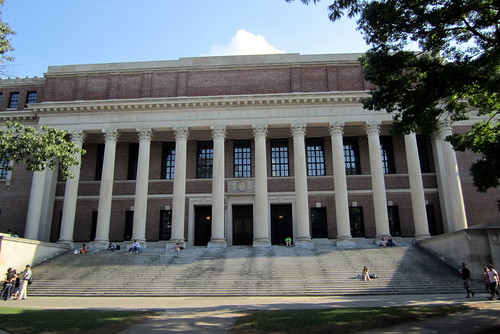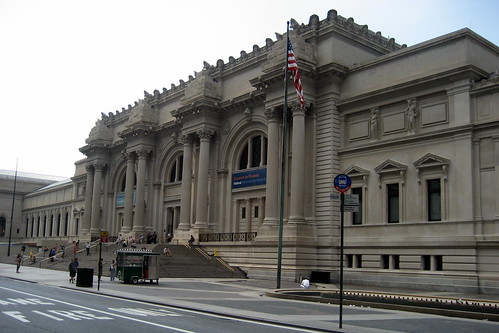Some cool American League Central images:
Cambridge – Harvard Square: Harvard University – Widener Libary

Image by wallyg
The Harry Elkins Widener Library, commonly known as Widener Library, located at 31 Harvard Yard, is the centerpiece of the 15.6 million-volume Hard University Library system, the largest university library system in the world. Built with a gift from Eleanor Elkins Widener, it is a memorial to her son, Harry, Class of 1907 and victim of the Titanic disaster. The library, designed in the Beaux Arts style by Julian F. Abele, one of first prominent African American architects, of Horace Trumbauer & Associates, first opened on June 24, 1915. By the late 1930’s, Widener Library had reached capacity, and the school built several new satellite libraries and from 1999 to 2004, underwent an extensive renovation. Today, the 320,000 square foot brick building houses 57 miles of bookshelves and 3 million volumes, including one of the few remaining perfect copies of the Gutenberg Bible.
Harvard University (officially The President and Fellows of Harvard College), a private Ivy League university, was established in 1636 by the colonial Massachusetts legislature. Harvard is the first corporation chartered in the United States and oldest institution of higher learning in the United States. The university currently comprises ten separate academic units and has the largest financial endowment of any school in the world.
Harvard Yard, a twenty-five acre grassy area, constitutes the oldest part and the center of the campus of Harvard University. Geographically Harvard Yard is bordered to the west by Massachusetts Avenue and Peabody Street, the north by Cambridge Street, the northeast by Broadway, the east by Quincy Street, and the south by Harvard Street and Massachusetts Avenue. It contains thirteen of Harvard College’s seventeen freshman dormitories, as well as four libraries, five buildings of classrooms and academic departments, and the central administrative offices of the Faculty of Arts and Sciences and the university. The western third of Harvard Yard, which opens onto Massachusetts Avenue at Johnston Gate, is known as the Old Yard.
Harvard Yard National Register #73000287 (1973)
NYC – UES: Metropolitan Museum of Art

Image by wallyg
The Metropolitan Museum of Art’s permanent collection contains more than two million works of art from around the world.
In 1866 a group of Americans were visiting Paris taking in the cultural delights of the Old World and it occurred to some of them that New York deserved a world class art museum. To that end John Jay, President of the Union League Club gave a speech declaring "America needed a National Institution and Gallery of Art and that the American gentlemen then in Europe were the men to inaugurate that plan." The art committee of the Union League Club, in concert with other prominent citizens, led the way with the museum to be established by an act of the New York State Legislature in 1870. The Metropolitan Museum of Art first opened its doors on February 20, 1872, housed in a building located at 681 Fifth Avenue in New York City. John Taylor Johnston, a railroad executive whose personal art collection seeded the museum, served as its first President, and the publisher George Palmer Putnam came on board as its founding Superintendent. Under their guidance, the Met’s holdings, initially consisting of a Roman stone sarcophagus and 174 mostly European paintings, quickly outgrew the available space. In 1873, occasioned by the Met’s purchase of the Cesnola Collection of Cypriot antiquities, the museum decamped from Fifth Avenue and took up residence at the Douglas Mansion on West 14th Street. However, these new accommodations were temporary; after negotiations with the city of New York, the Met acquired land on the east side of Central Park, where it built its permanent home, a red-brick Gothic Revival stone "mausoleum" designed by American architects Calvert Vaux and Jacob Wrey Mold. The Met has remained in this location ever since, and the original structure is still part of its current building. A host of additions over the years, including the distinctive Beaux-Arts facade, designed by Richard Morris Hunt and completed in 1926, have continued to expand the museum’s physical structure. As of 2006, the Met measures almost a quarter mile long and occupies more than two million square feet, more than 20 times the size of the original 1880 building.
In 2007, the Metropolitan Museum of Art was ranked #17 on the AIA 150 America’s Favorite Architecture list.
The Metropolitan Museum of Art was designated a landmark by the New York City Landmarks Preservation Commission in 1967. The interior was designated in 1977.
National Historic Register #86003556
